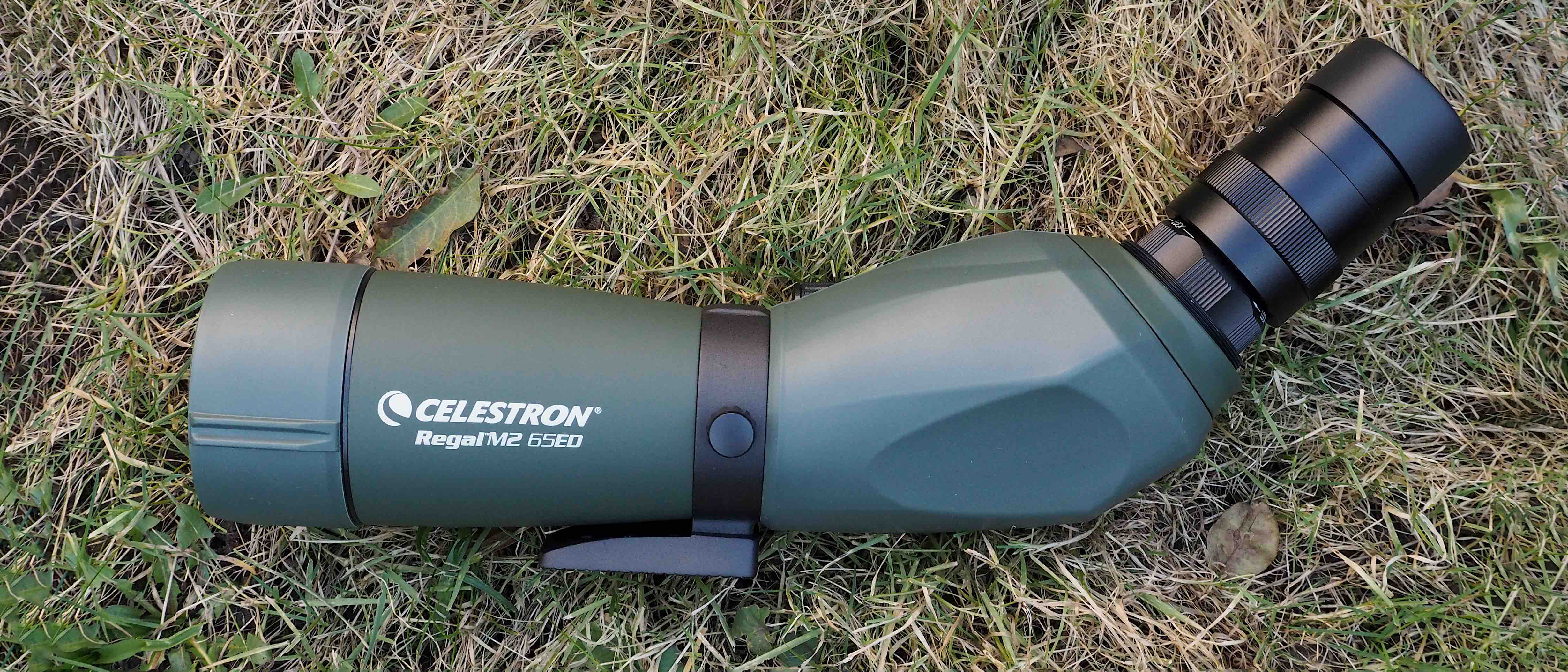Digital Camera World Verdict
Premium-feel angled spotting scope the length of a forearm that twins a powerful 16-48x magnification range with a large and bright 65mm objective lens to pull the faraway both closer and more sharply into focus. Because of the high level of spec and resulting chunkiness, this Celestron device requires use with an optional tripod. Once mounted, it delivers a bright, close-up view free from chromatic aberration it feels like we can almost reach out and pick the birds from the trees. An adapter ring additionally affords the chance to practise the art of ‘digiscoping’ – namely taking pictures – via the scope. In conclusion, this is a comprehensive package, priced accordingly.
Pros
- +
High magnifying power achievable
- +
Large bright objective lens
- +
Well-built and solid construction
- +
Potential to be used for ‘digiscoping’
Cons
- -
Chunky and weighty
- -
Requires use of a tripod for observation
- -
A high-quality model inevitably means a high-ish price tag
Why you can trust Digital Camera World
If all we’ve been used to in the past is a pair of binoculars or their lighter-weight monocular alternative, then the Celestron Regal M2 65ED spotting scope will feel properly heavy-duty by comparison. The length of our elbow, forearm, and hand combined, it’s a chunky beast, even if it is more compact than the average telescope.
Intended for wildlife watchers and nature lovers, this heavy-duty scope can be handily fixed to a tripod, which given the size, weight, and magnification on offer here, is an essential extra purchase. Not only does mounting the scope keep both our hands free for adjusting focus and angle of view, but it also helps deliver smooth and judder-free observation towards the maximum magnification setting. The caveat here is that this level of scope specification and build quality is not inexpensive, even if Celestron as a manufacturer is routinely feted for its good value products.
With first impressions being largely positive, how does the Celestron Regal M2 65ED spotting scope handle in practice?
Specifications
Magnification: 16x-48x
Objective lens diameter: 65mm
Field of view at 1000 meters: 43-23m
Closest focusing distance: 5 metres
Eye relief: 20mm
Weight: 1327g
Dimensions: 332 x 96 x 117mm
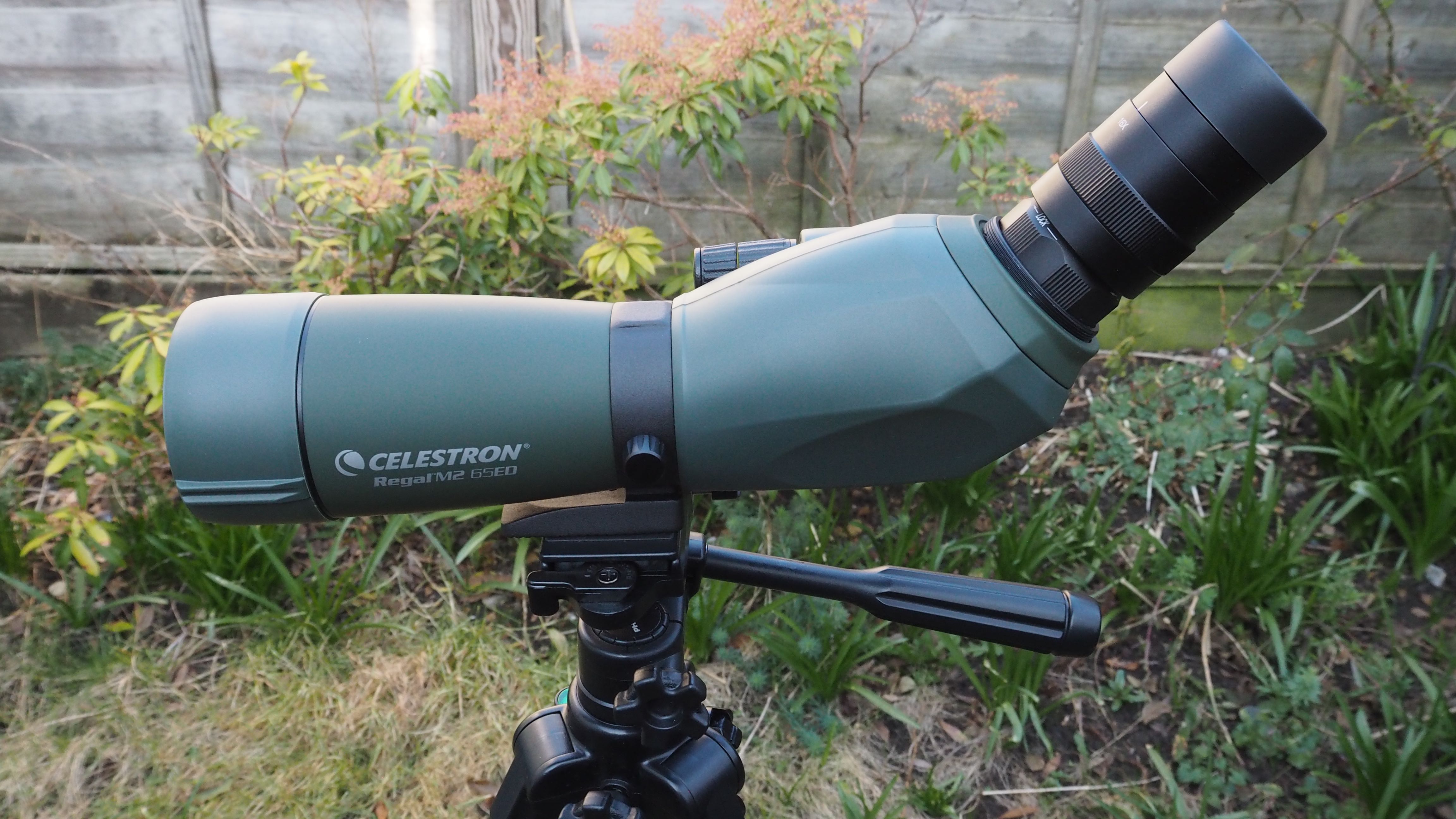
Key features
Once again some of the key features of this scope are trumpeted in the model name of the Celestron Regal M2 65ED. As regular readers will know, the ‘ED’ in the model name here refers to the inclusion of high-quality Extra-low Dispersion glass in the scope’s construction to help avoid chromatic aberration, while the ‘65’ refers to its large-ish 65mm objective lens.
As always, the broad rule of thumb when it comes to objective lenses is the bigger the lens the brighter the view through our eyepiece. As well as the above the construction of this scope further features class-leading BaK-4 prisms and fully multi-coated optics. In short, this top-of-the-range device is optimized to deliver the sharpest and hopefully clearest image possible. It’s versatile too, in that its standard 1.25-inch eyepiece mount allows the use of a variety of astronomical eyepieces if star-gazing as well as animal watching is your thing.
As expected at this level, the scope is nitrogen purged to prevent fogging and waterproofed with it. We also get a soft carry case provided out of the box in a good quality woven nylon backpack-like material for transportation and further protection from the elements when out and about.
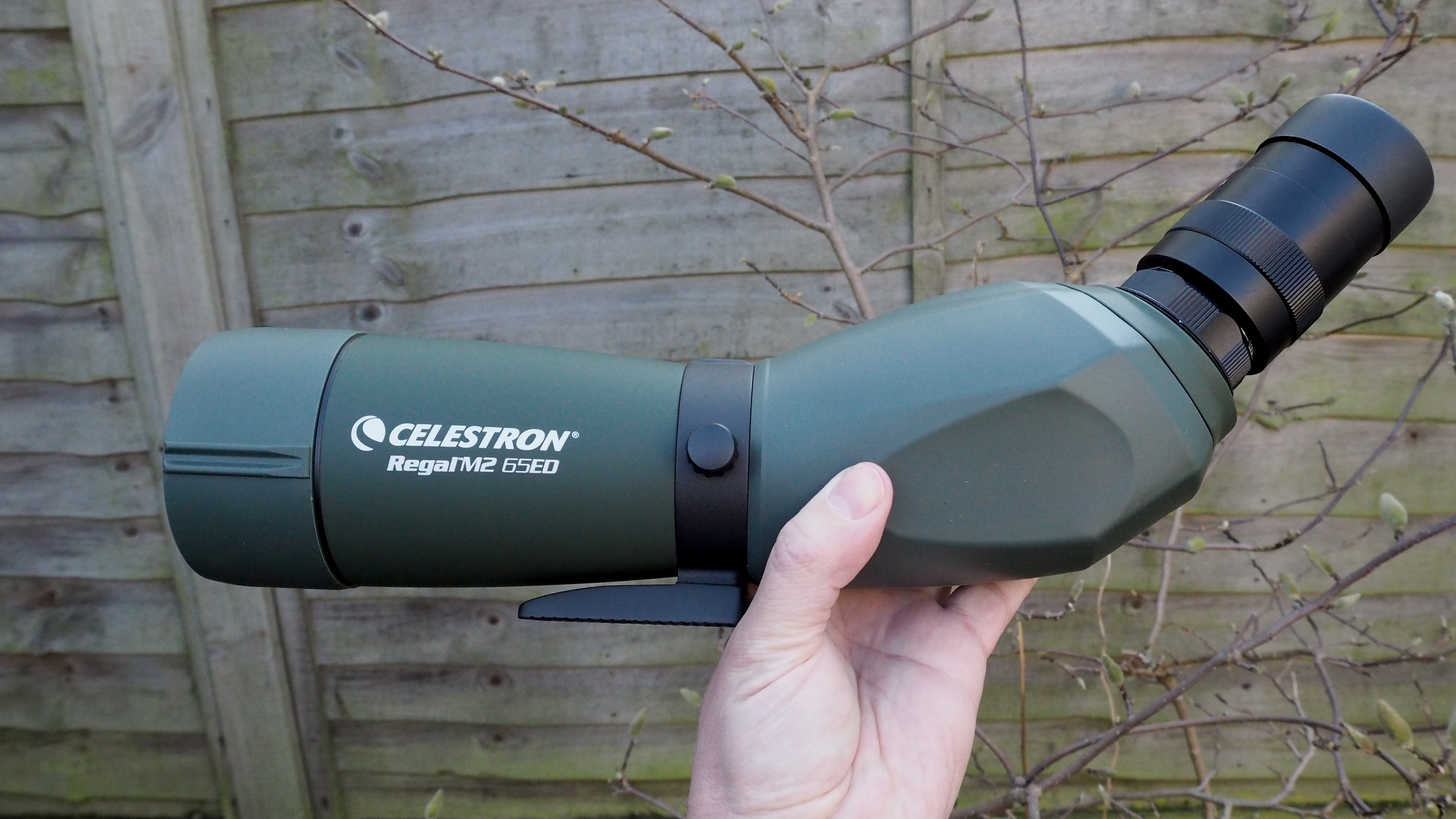
Build and handling
Roughly the length of a human forearm complete with hand and elbow joints, the magnesium-alloy-bodied Celestron Regal M2 65ED certainly looks, well, a bit posh. Instead of a plastic or rubber slip-on eyepiece cover, we get a metal cylinder that screws into place and covers that whole section, thereby offering maximum protection for the angled eyepiece unit when transporting.
It does however add to set up time, in that we have to unscrew it before observation can begin. At the other end of the device is a regular clip-on objective lens cap – the kind we’d find supplied with a camera lens.
Halfway down the body of the scope and sitting above the fitted tripod mount is a dual-action focus knob. Here the slightly thicker of the dials is for broadly determining focus, and offers some resistance, while the smaller one that sits just in front of it for fine-tuning is much looser in feel.
Focus can be adjusted with the right hand while the left-hand turns the magnification ring on the zoom eyepiece, with approximate settings marked on the barrel from minimum 16x to maximum 48x. These are more for show than anything, as with our eye pressed up against the eyepiece, we can’t actually see them when operating the scope.
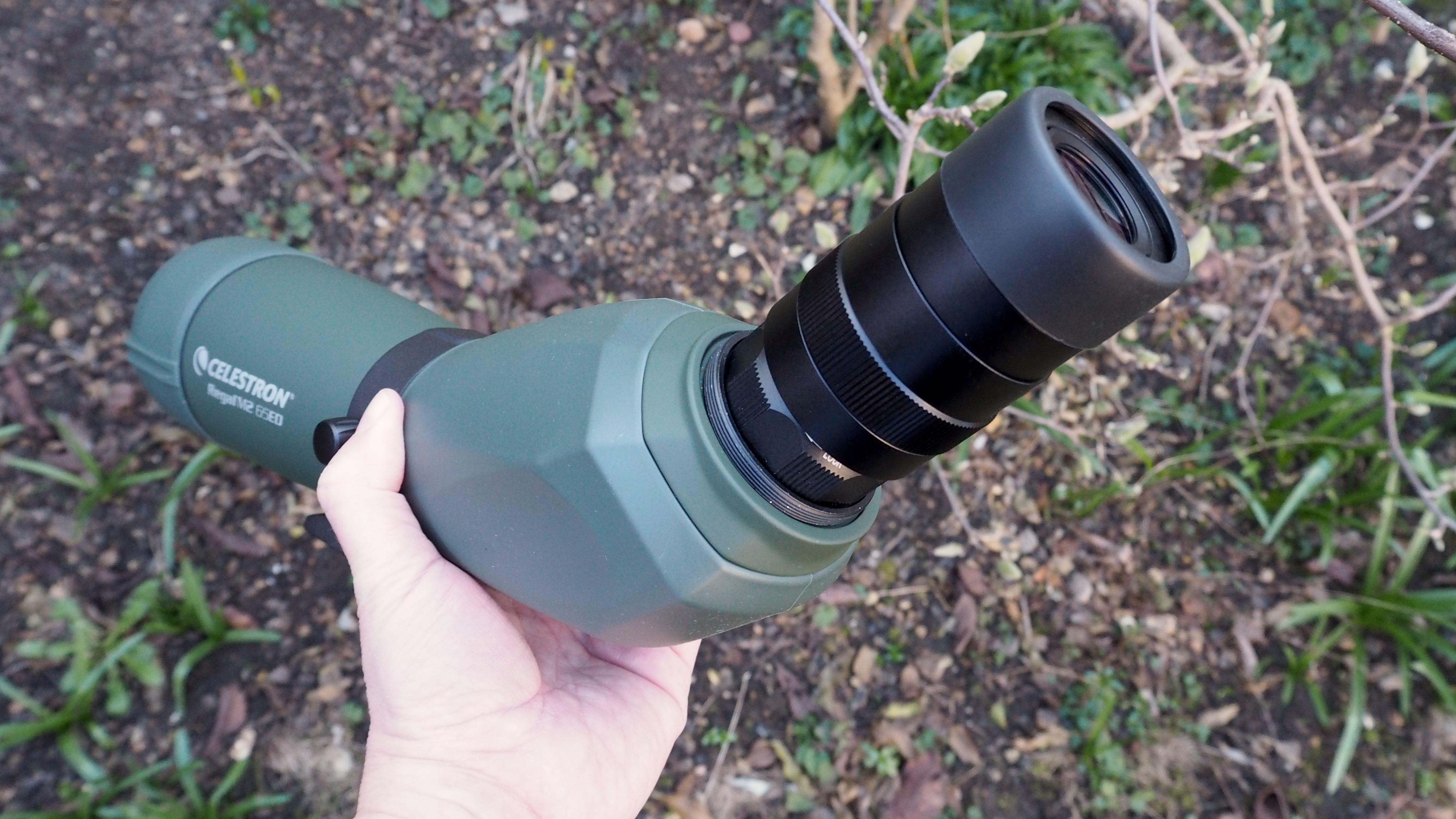
The Celestron Regal M2 65ED has an attractively tactile feel thanks to its rubber-coated exterior, which also enables a sturdy grip when retrieving it from its box or provided carry bag and placing it on and taking it off the tripod.
While said tripod feels a must, if pushed it is possible to achieve an acceptably wobble-free image if we do want to use it handheld, provided we’re on the lowest 16x magnification setting. As we progress to a maximum of 48x magnification, however, the image through the eyepiece begins predictably jumping around all over the place – unless we add the suggested and very sensible tripod support.
The Celestron Regal M2 65ED’s build quality is such that it gives us reassurance it will withstand years of use with careful ownership, which is exactly what we’d hope and expect at this price point. Each feature promotes its operation and feels precision engineered, without any corners having been obviously cut to come in at its price point.
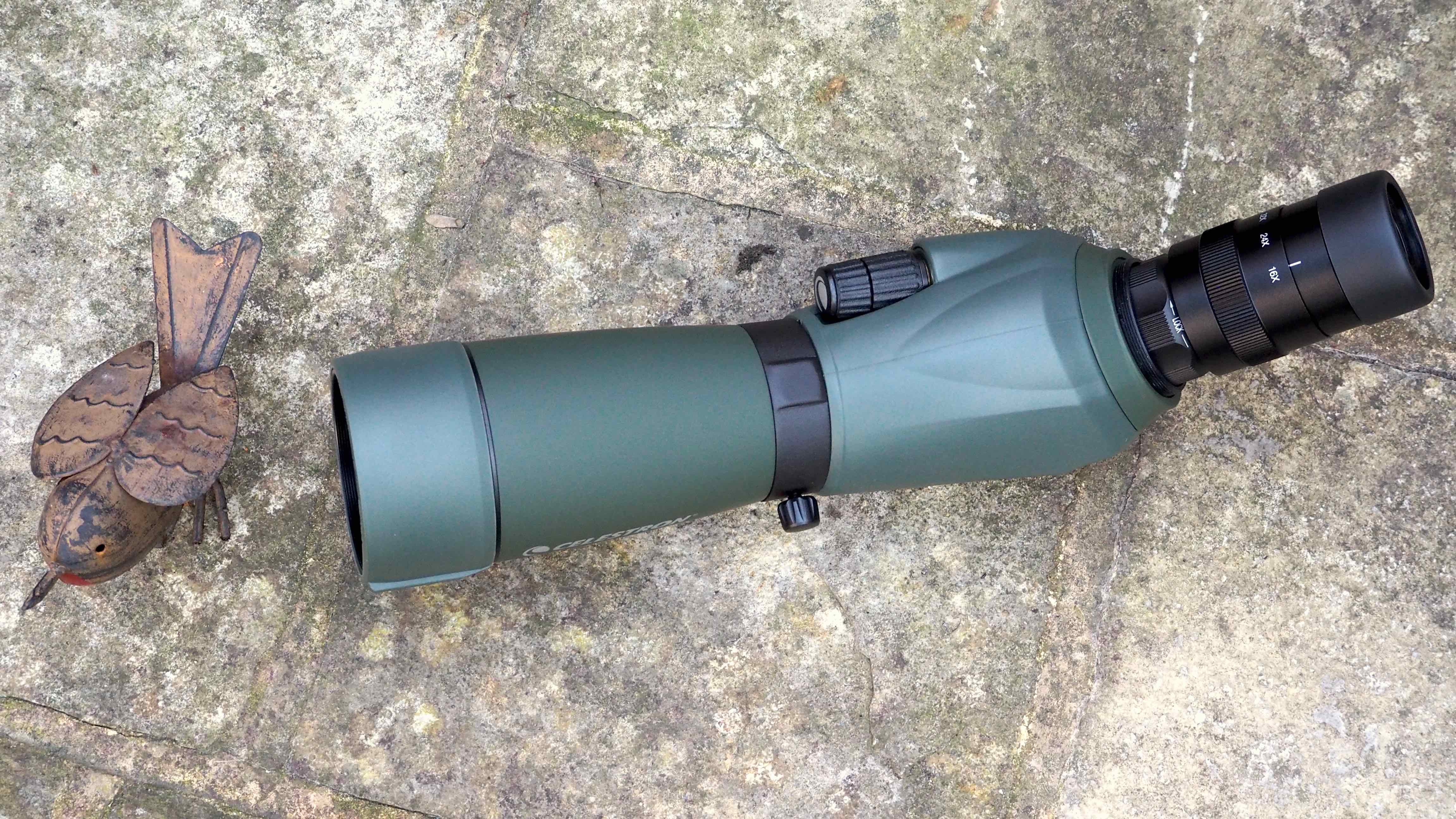
Performance
Even on dull days with plenty of cloud cover, the brightness of the lens ensures that we are able to achieve consistently clear results. We deliberately focused the Celestron Regal M2 65ED on more challenging high-contrast subjects, such as the branches of a tree silhouetted against a featureless sky.
We are happy to report that views were naturalistic and sharp in terms of color and free of tell-tale purple fringing. If we’re nit-picking, at times we did notice a watery halo-like effect towards the edges of our circular frame.
The manufacturer also claims its dual focus knob setup allows us to find critical focus twice as fast. We’re not sure about that, but in any event, we were able to arrive at a level of sharpness we were happy with via the broader dial, without really needing to utilize the fine-tuning.
Twiddling the smaller focus dial rarely made much discernable difference. When the weather brightens an adjustable pull-out lens shade at the front and twist-up eyecup for the eyepiece at the rear aids viewing comfort. And, as stated earlier, we really do need to add a tripod to the setup to get the best results and most comfortable observation with the scope.
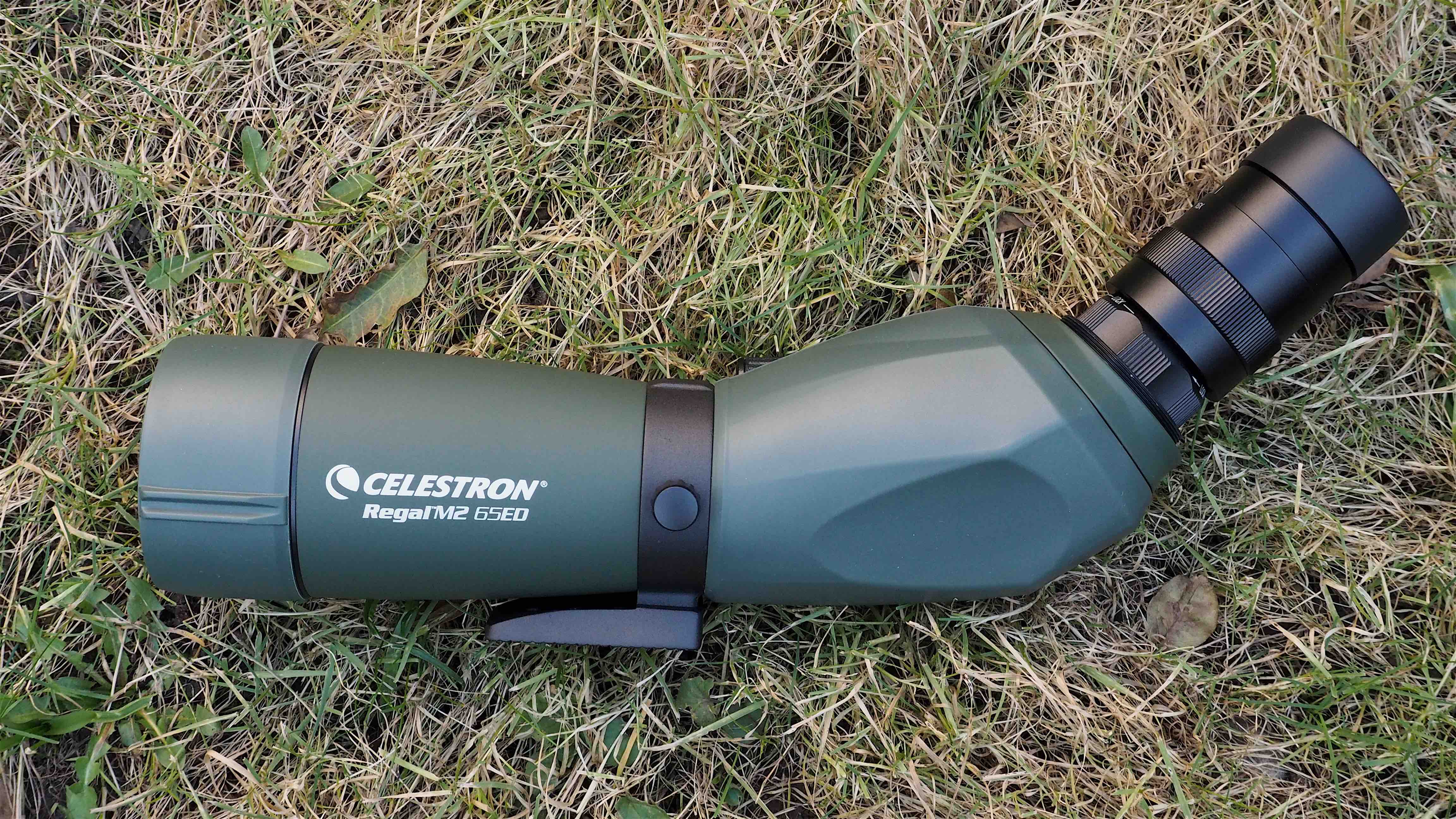
Verdict
For those who are serious about observing the wonders of nature, whether out in the great outdoors or from the back bedroom window, the waterproof Celestron Regal M2 65ED delivers a sharp, clear, and moreover close-up view of the faraway. A large and bright objective lens that aids low light observation does mean a fairly chunky scope, however, that requires the use of a full-size tripod to deliver judder-free viewing. Still, if we’re going to be observing what’s around us from a fairly static point, and not getting up and moving with our visual quarry, that’s not an issue.
While it’s not inexpensive, pricing here feels fair and the scope’s build and implementation are worthy of the investment being asked. Custom-made extras include an adapter that allows the use of a smartphone to take pictures and video if desired, making this a fairly comprehensive and future-proof option for dedicated birders.
Read more:
• The best spotting scopes
• Best binoculars
• Best budget binoculars under $100
• The best monoculars
• The best night vision goggles and binoculars
Gavin has over 30 years’ experience of writing about photography and television. He is currently the editor of British Photographic Industry News, and previously served as editor of Which Digital Camera and deputy editor of Total Digital Photography.
He has also written for a wide range of publications including T3, BBC Focus, Empire, NME, Radio Times, MacWorld, Computer Active, What Digital Camera and the Rough Guide books.
With his wealth of knowledge, Gavin is well placed to recognize great camera deals and recommend the best products in Digital Camera World’s buying guides. He also writes on a number of specialist subjects including binoculars and monoculars, spotting scopes, microscopes, trail cameras, action cameras, body cameras, filters and cameras straps.
